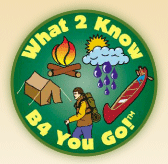The Jurica-Suchy Museum at Benedictine University hosted our Animal Tracking Workshop on June 28, 2014. All of the younger tracking enthusiasts brought either their parents or grandparents to the event. And judging by their enthusiasm and their post-class comments both the young and the not-so-young thoroughly enjoyed themselves.
The participants learned how the “Tough Guys of the Woods”–bears, raccoons, and opossums–walked and why their “personalities” made their gaits different from those of the “Quiet Walkers”–wolves, deer, coyotes, foxes, cougars, and bobcats. Because they are prey to almost every wild canine, feline, and raptor the “Ready-To-Runs”–mice, chipmunks, rabbits, and squirrels–leave a galloping pattern almost everywhere they go. And the high-energy members of the weasel family bound in a gait similar to the motion of a child’s, toy “Slinky”. As the afternoon progressed, all of those who cared to try were given the opportunity to get down on their hands & knees and mimic the walking-attitudes of each of these critters.
We then returned to the classroom to learn how to identify individual footprints of animals. How many toes? Claws or no claws? What is the general shape of the print? The importance of each of these features was explained and discussed. Plaster casts of grizzly, black bear, wolf, and fox footprints were on display and the students learned about the similarities between the tracks of humans and those of what Ron called the “BROther Animals”–Bear, Raccoon, & Opposum.
The 3-hour session ended with half of the class visiting the fascinating Jurica-Suchy Museum and the other half joining Ron in the field to examine actual footprints of actual animals.
Comments of the Participants:
-“Very interesting. Kids liked it. These are some simple observations that help identify animals.”
-“Very good. It was more detailed than I expected, which was good!”
-“10 thumbs up”
-“Very positive. Absolutely worth my time–we all [2 adults & 2 young people] learned something.”



0 Comments until now
Add your Comment!